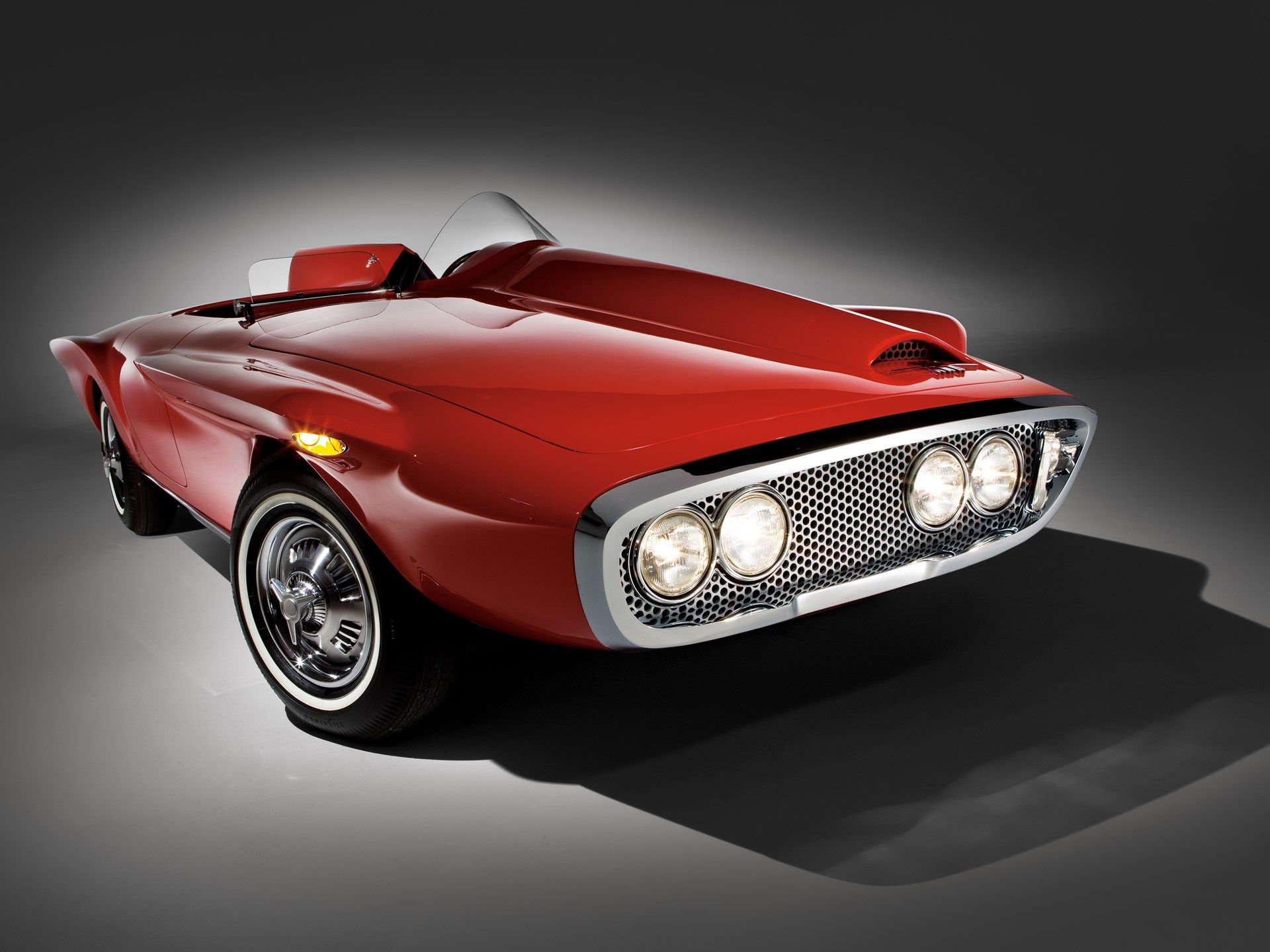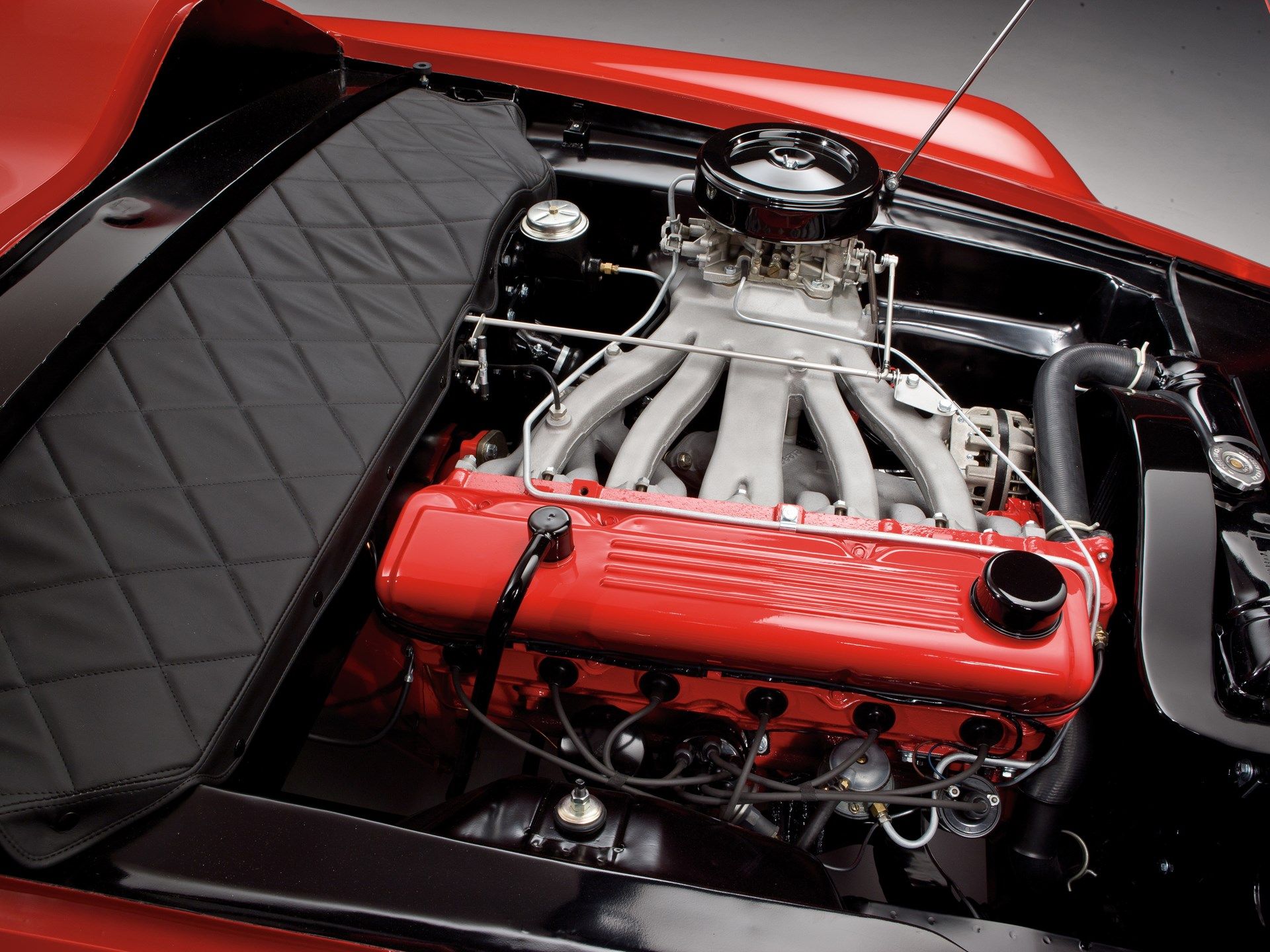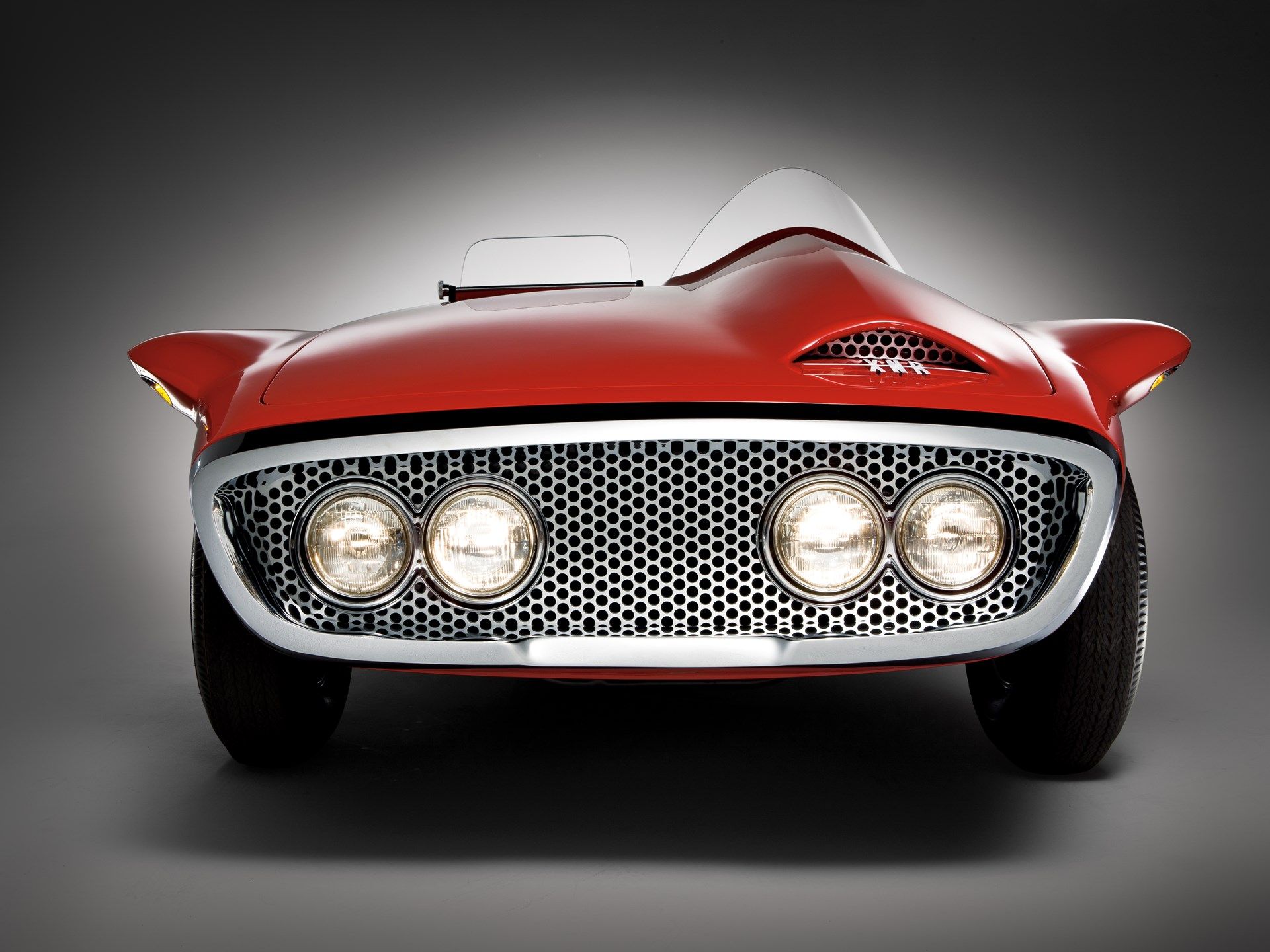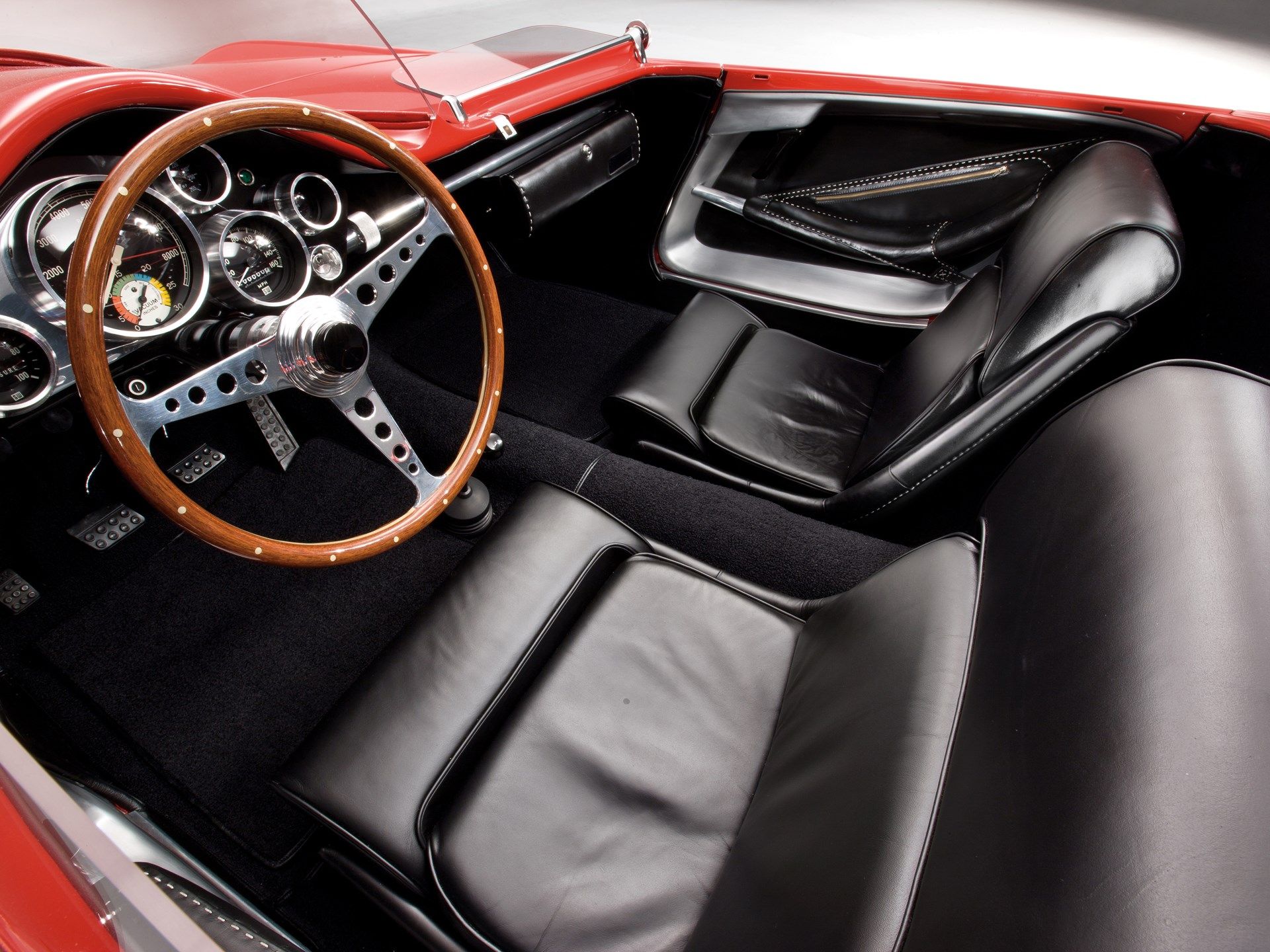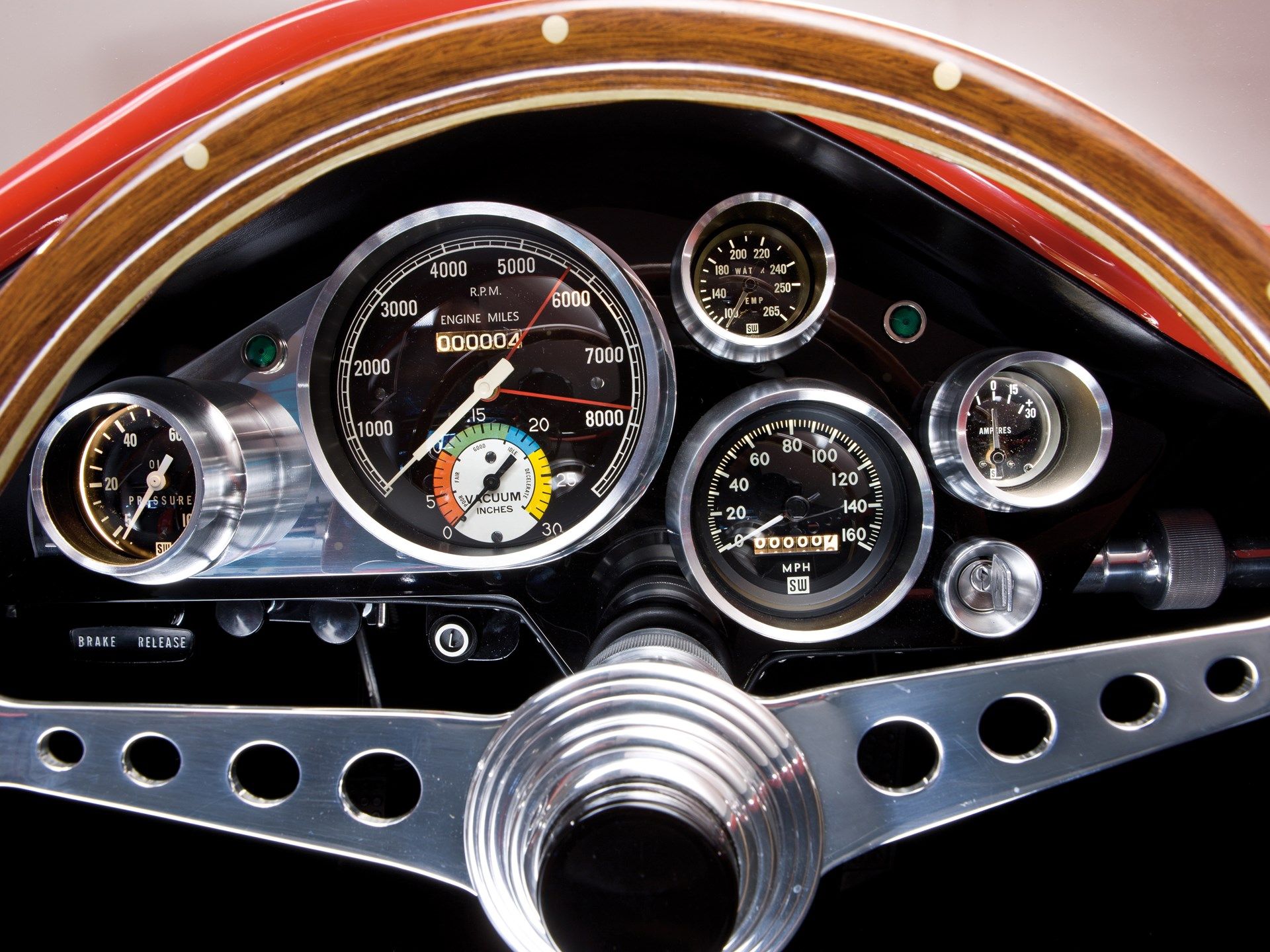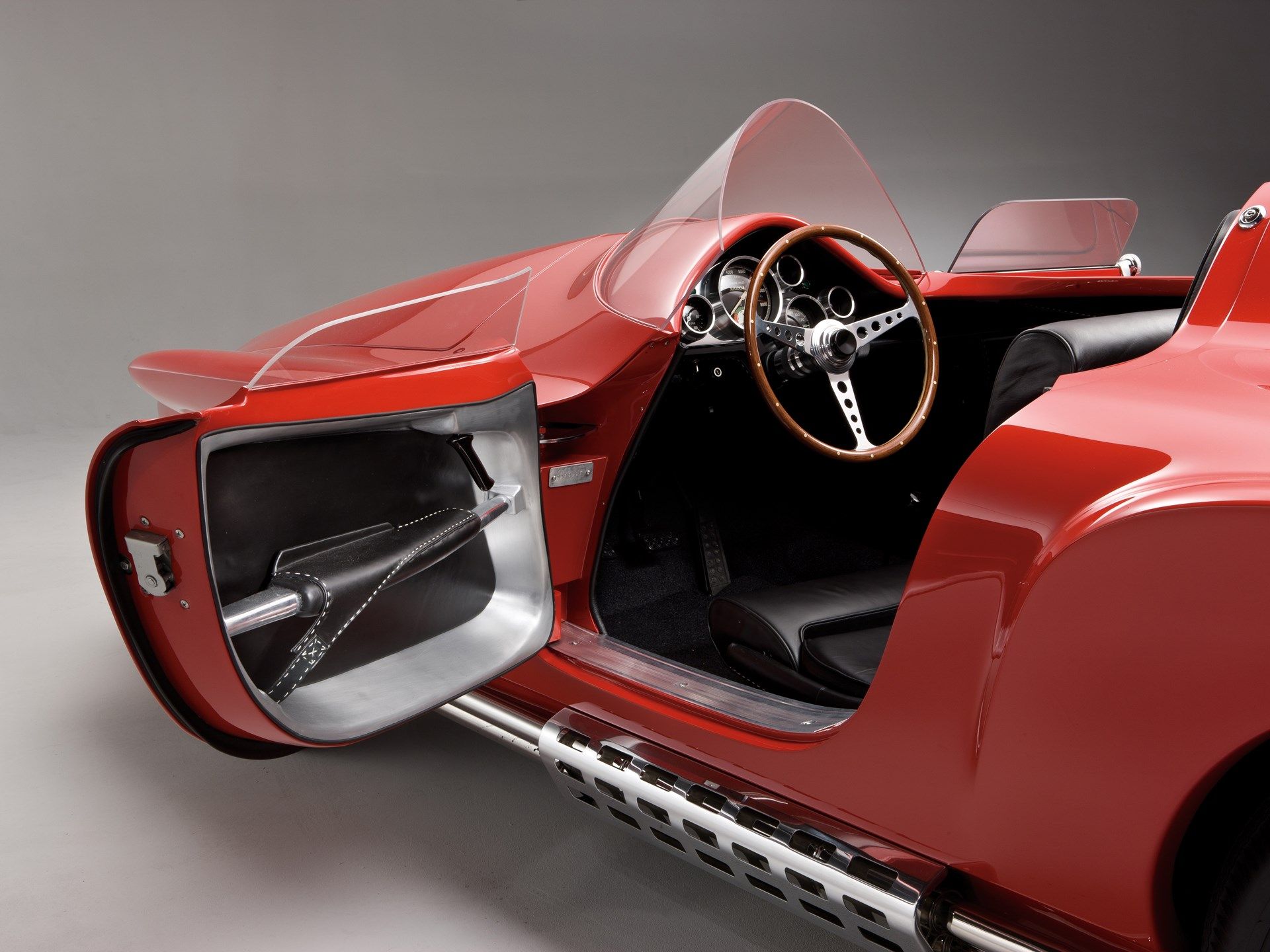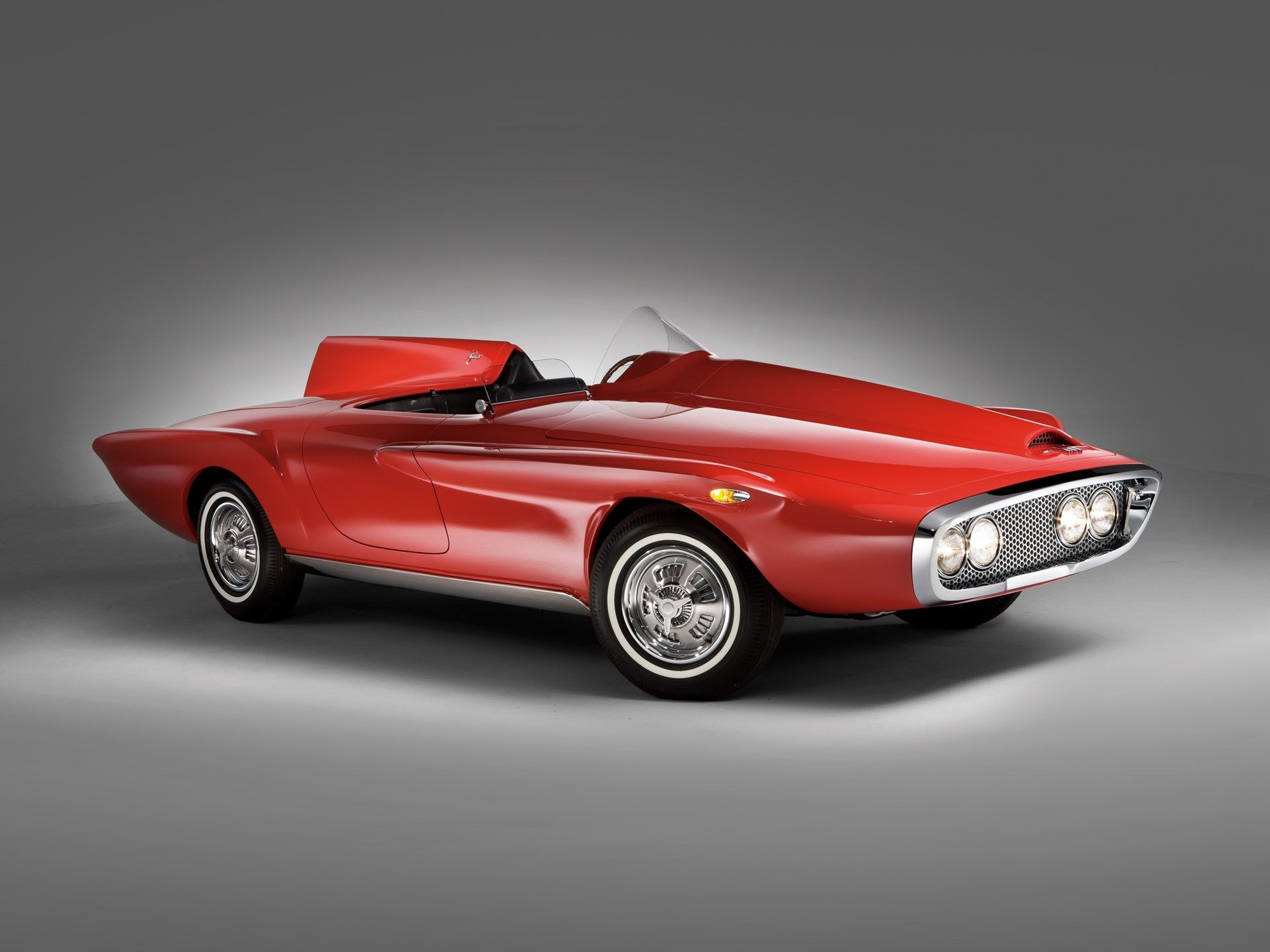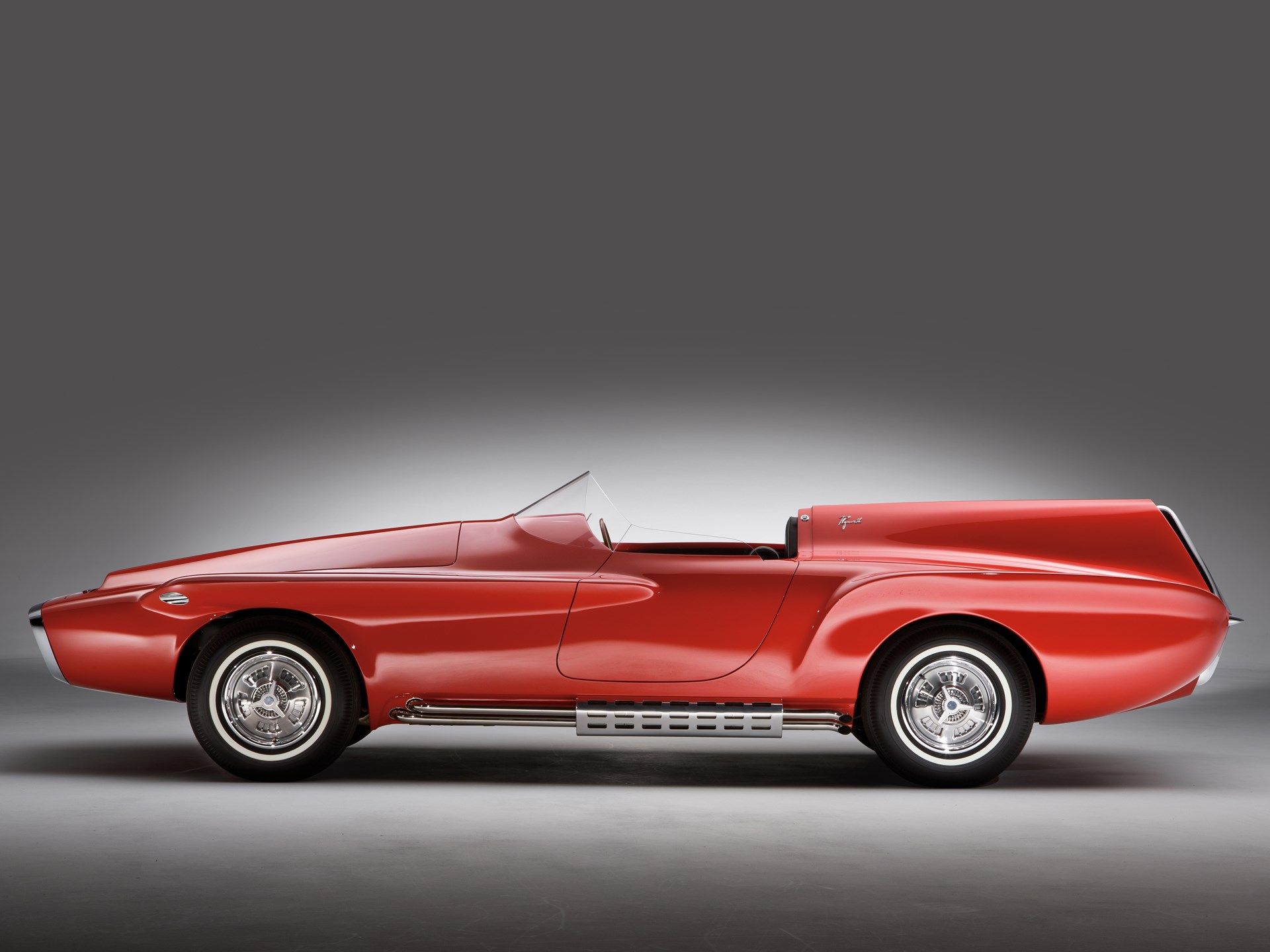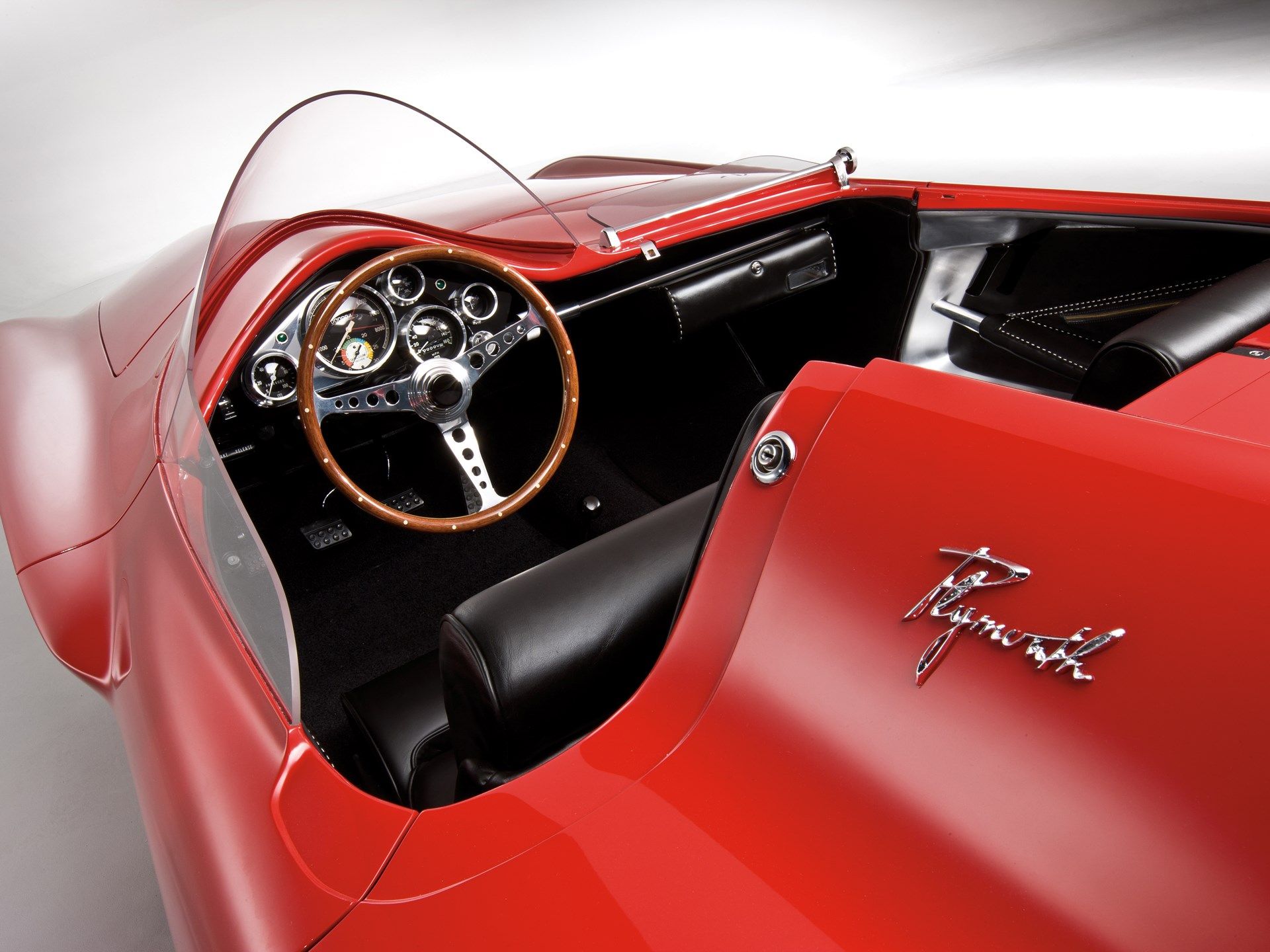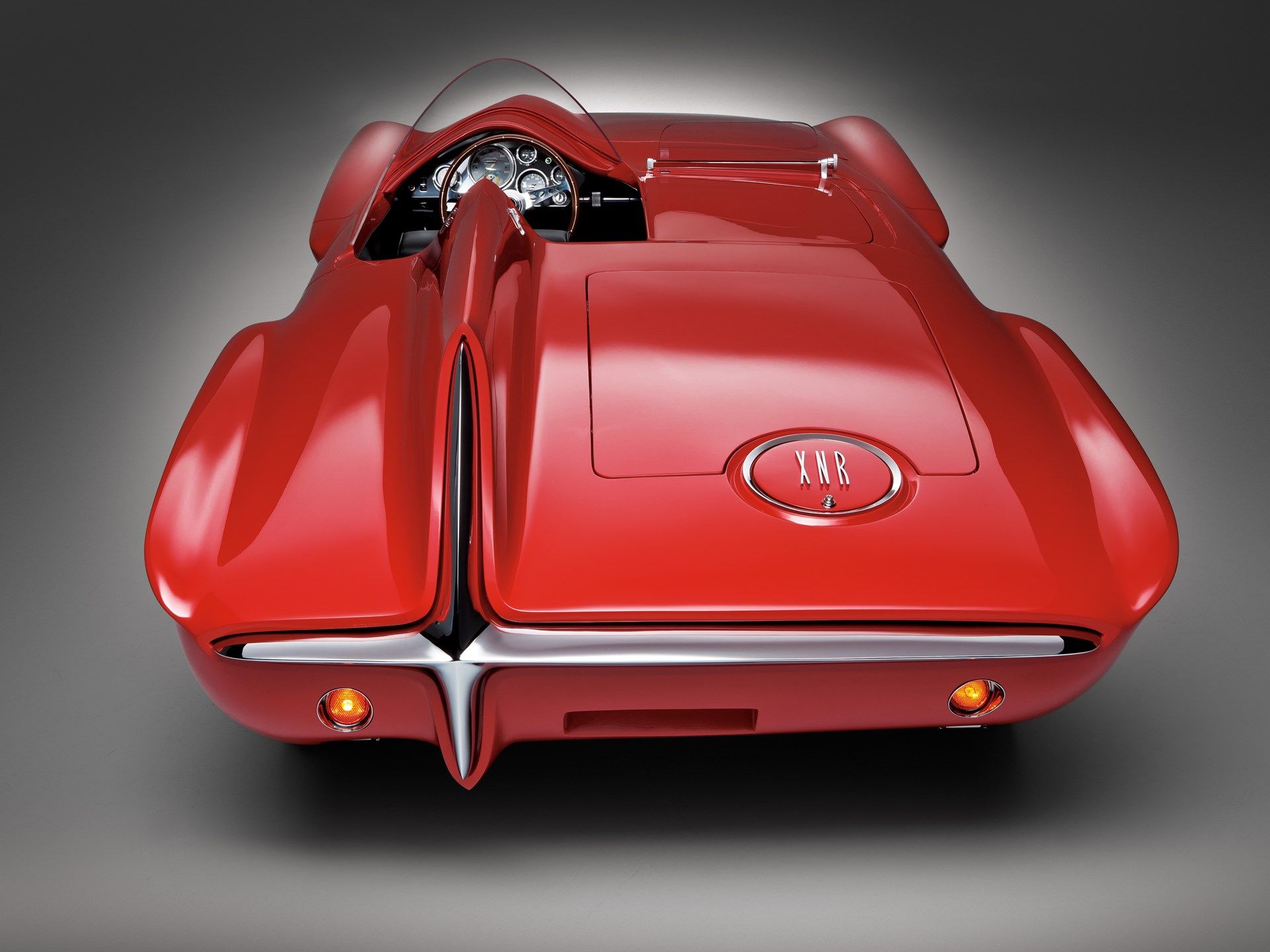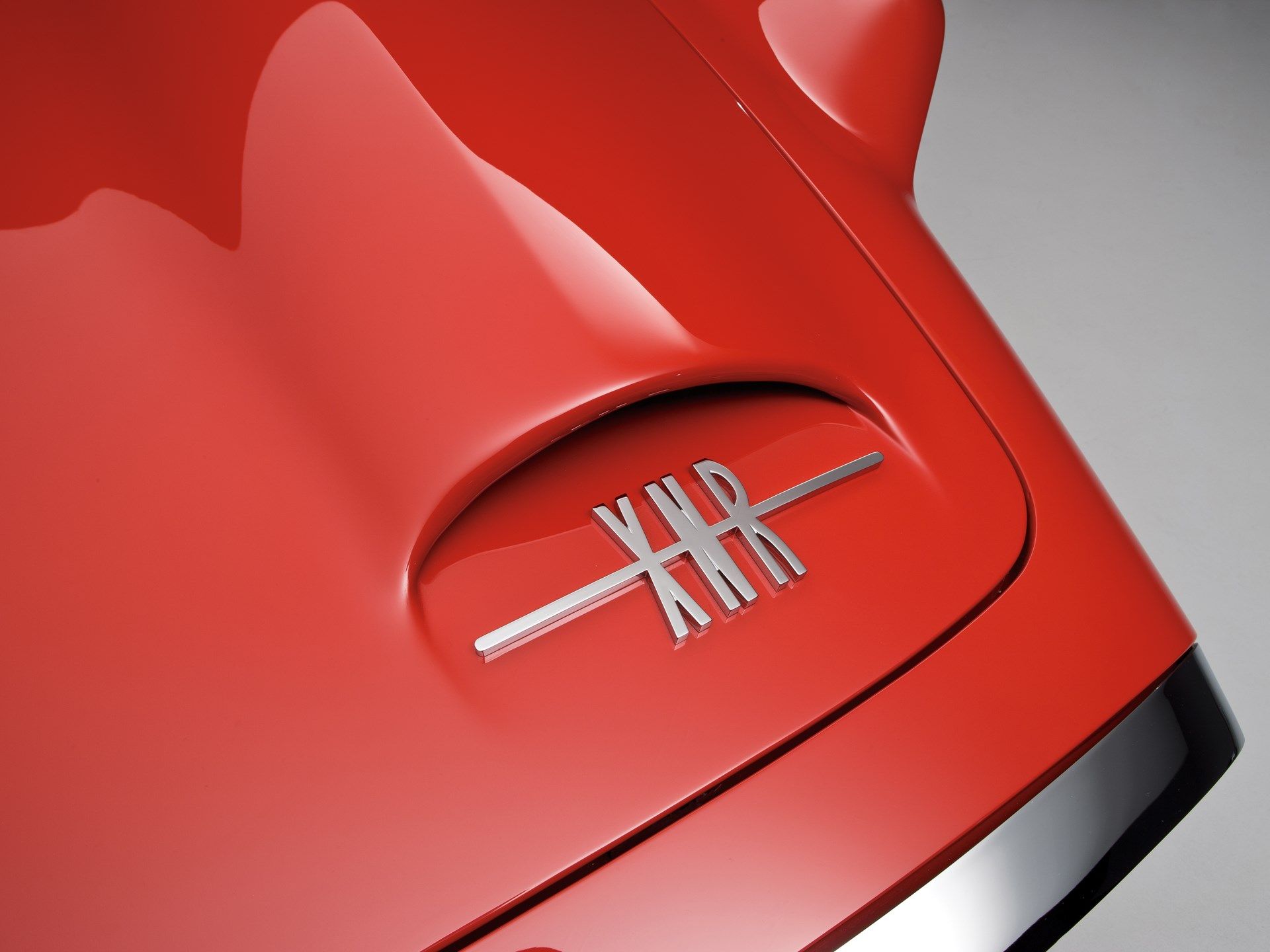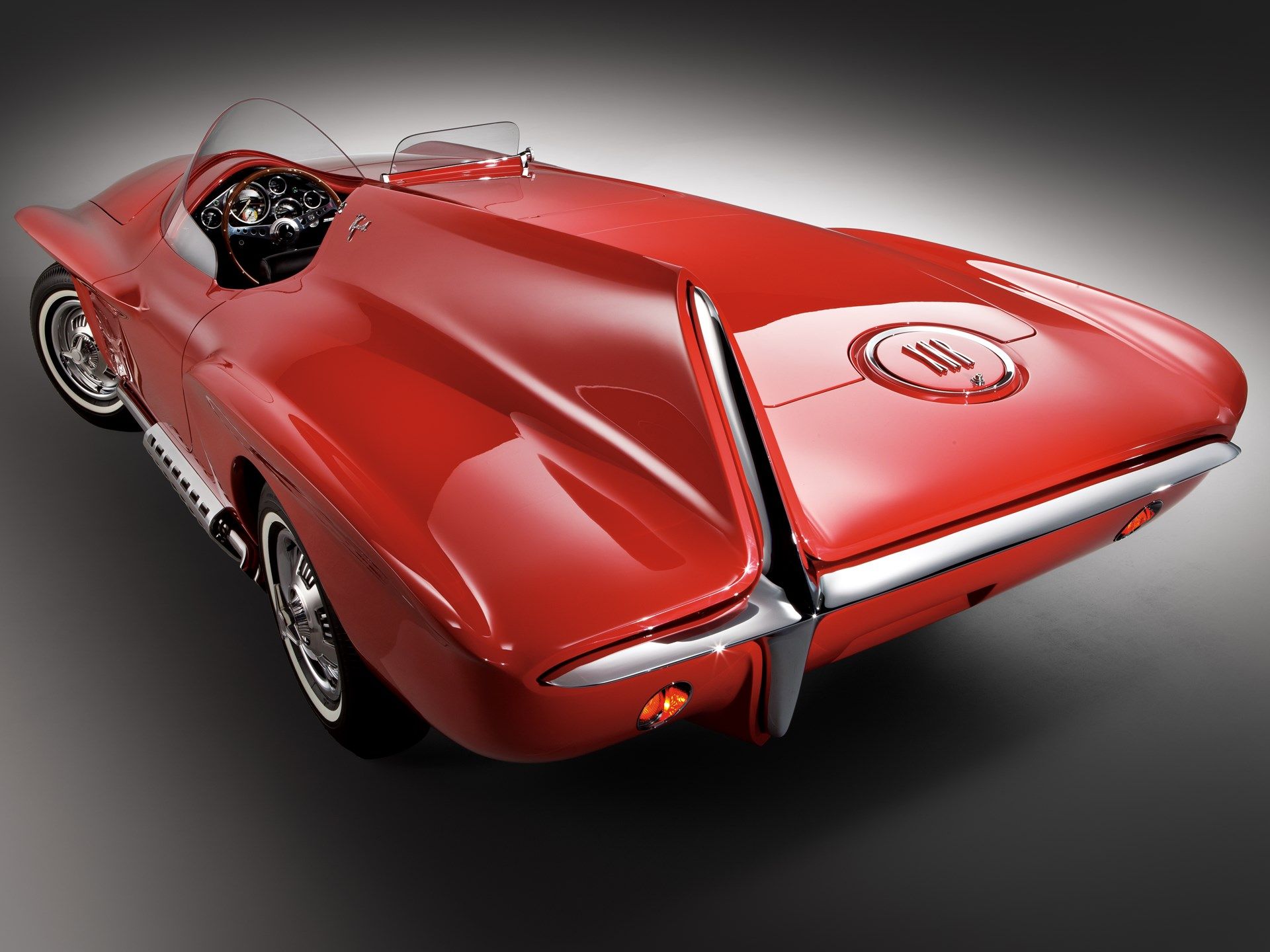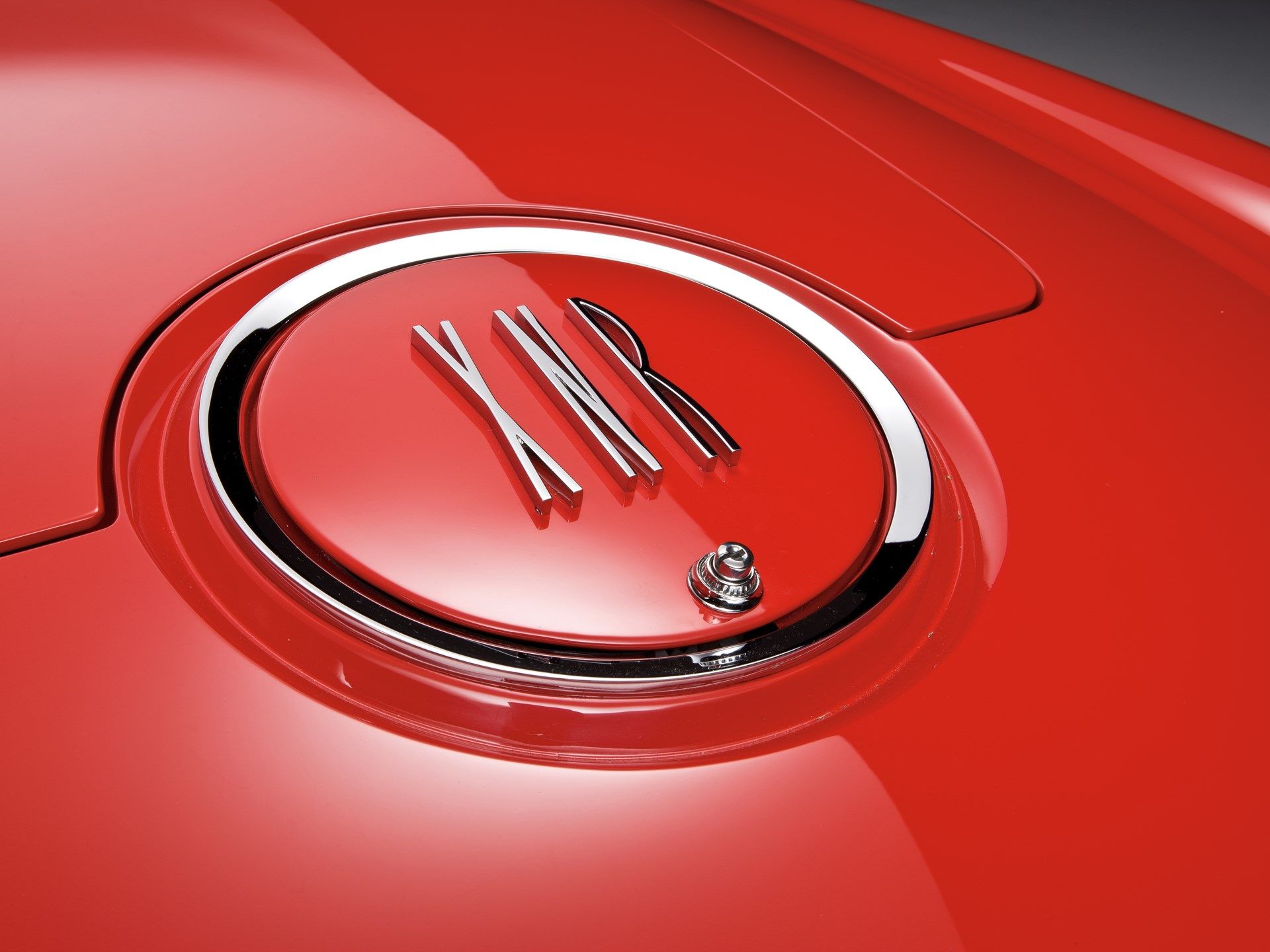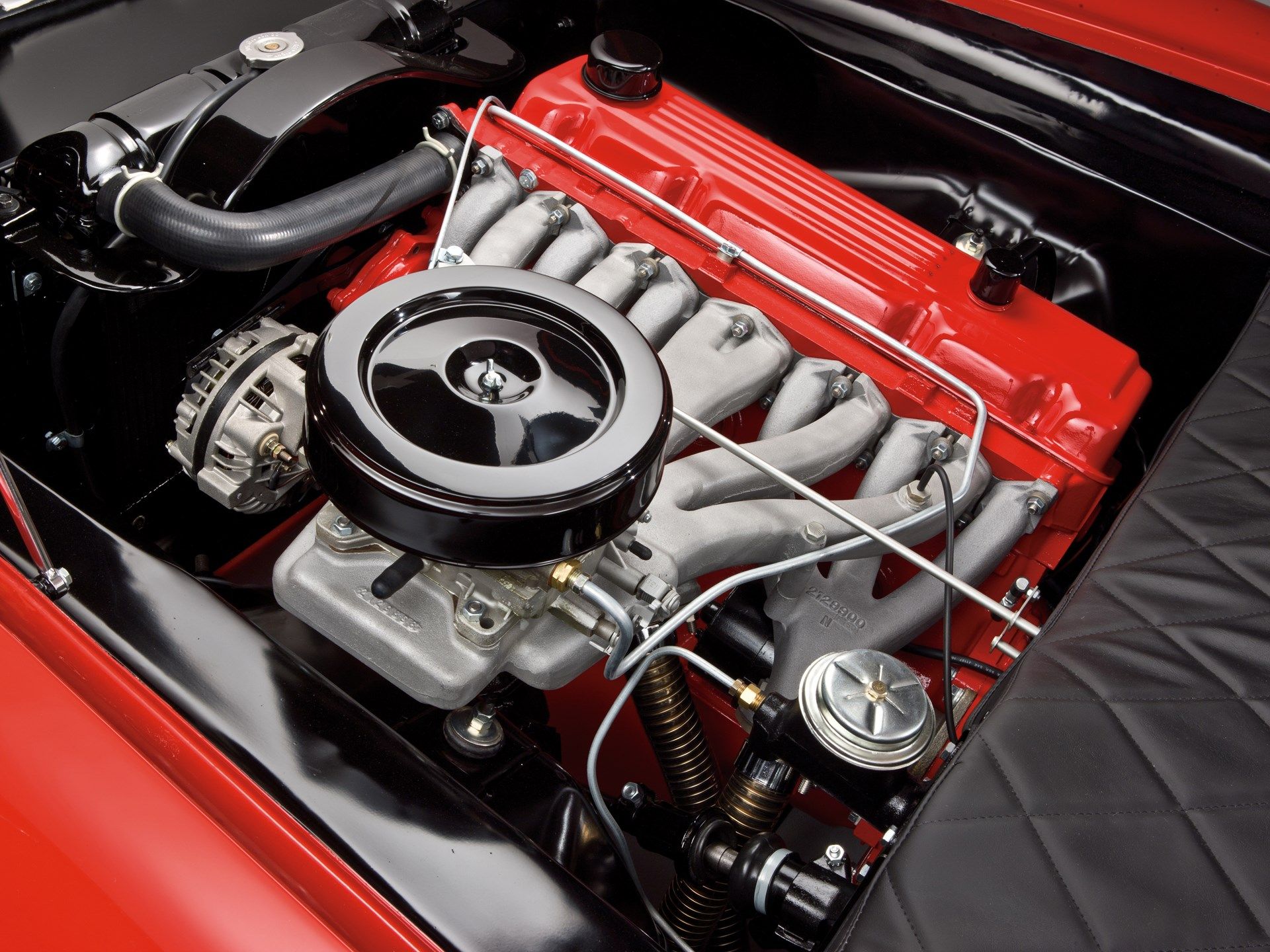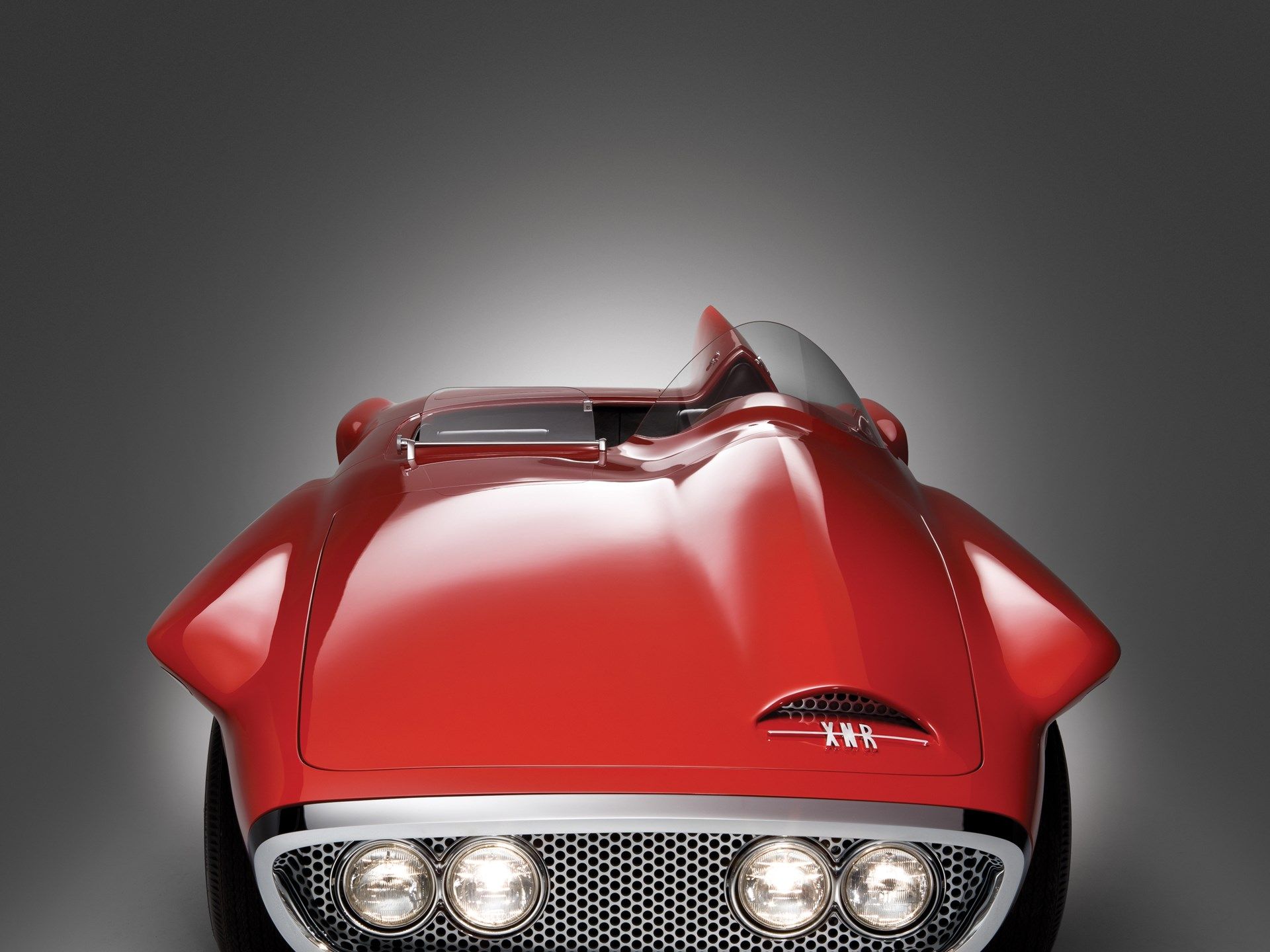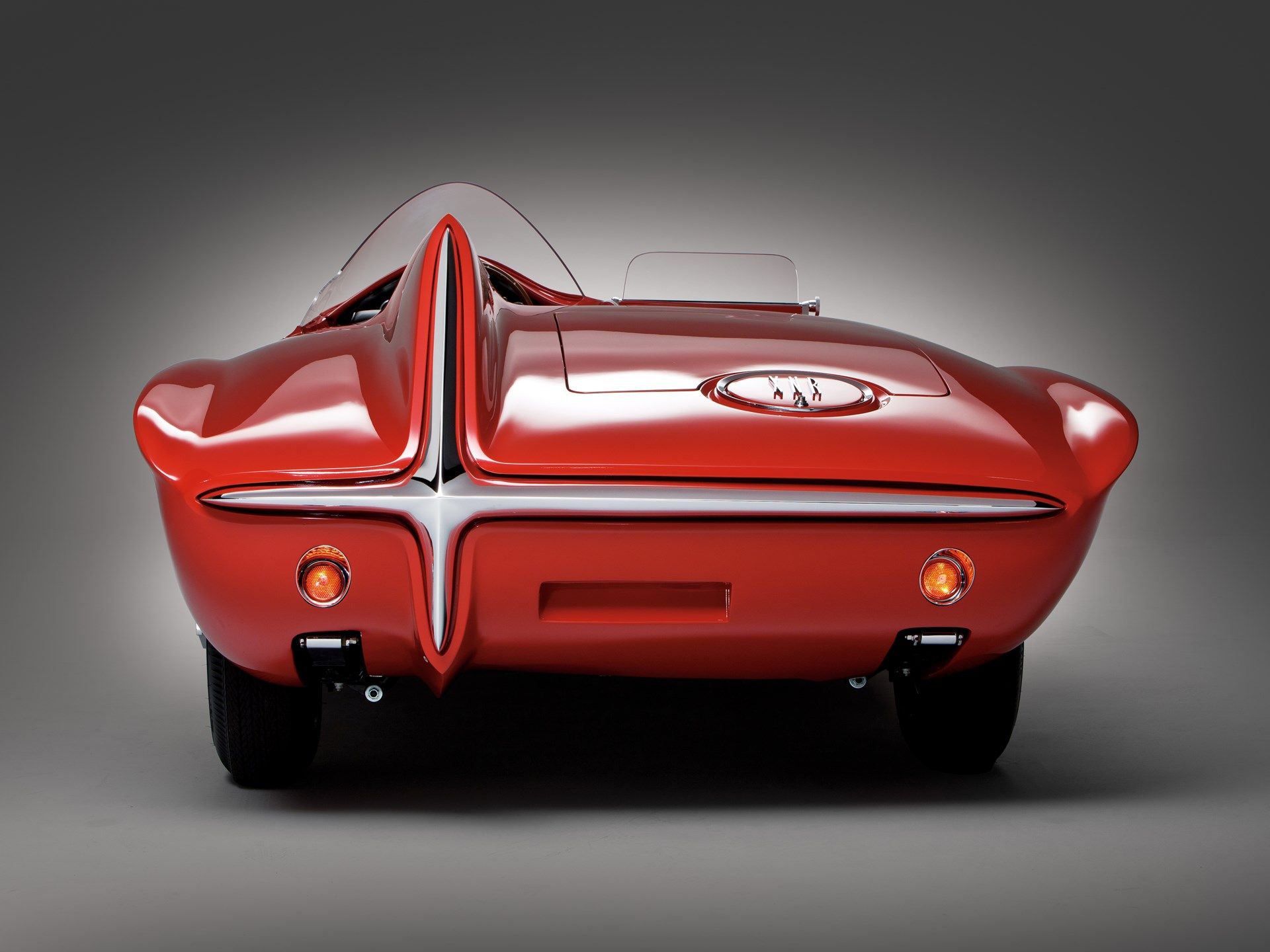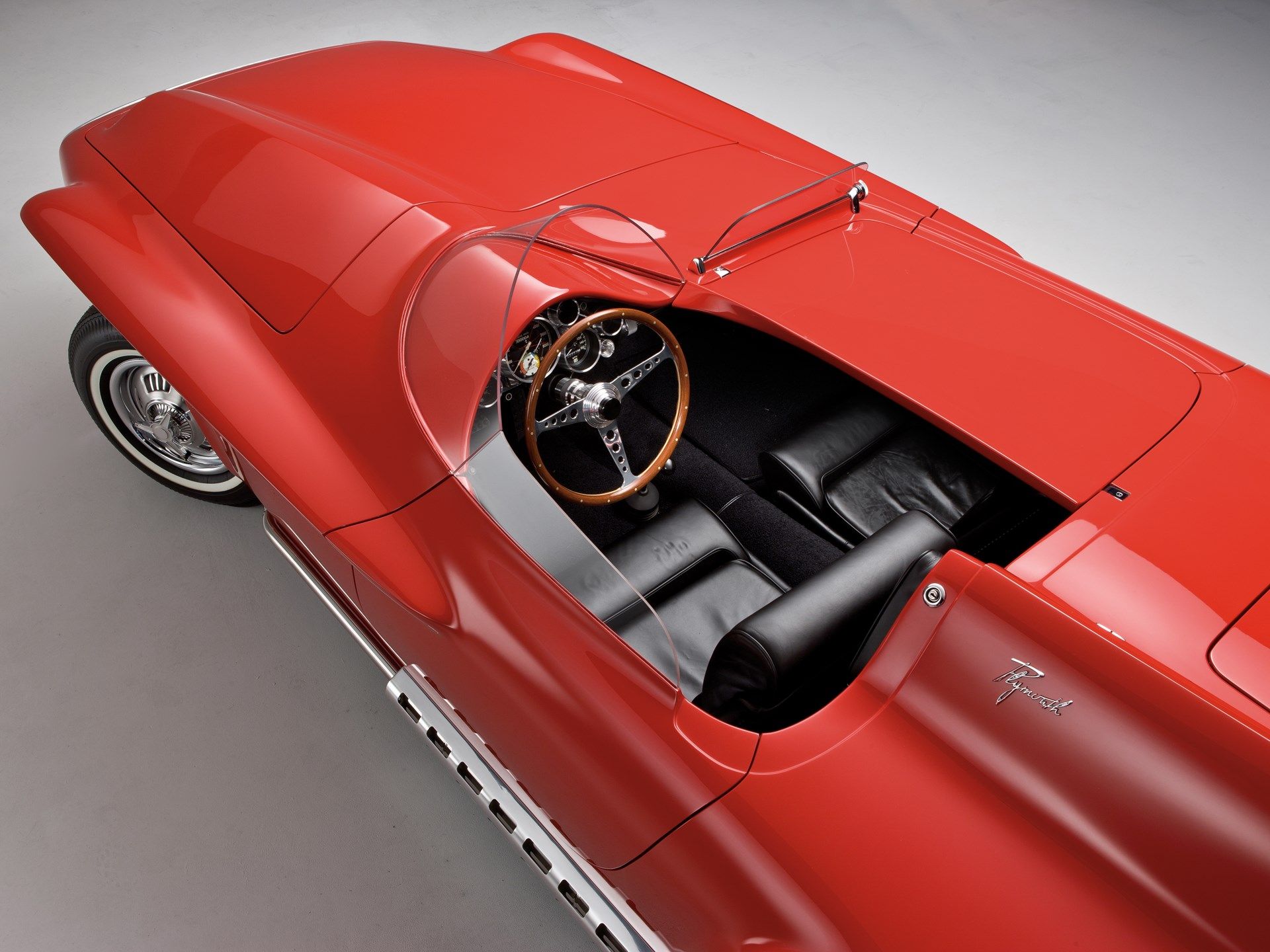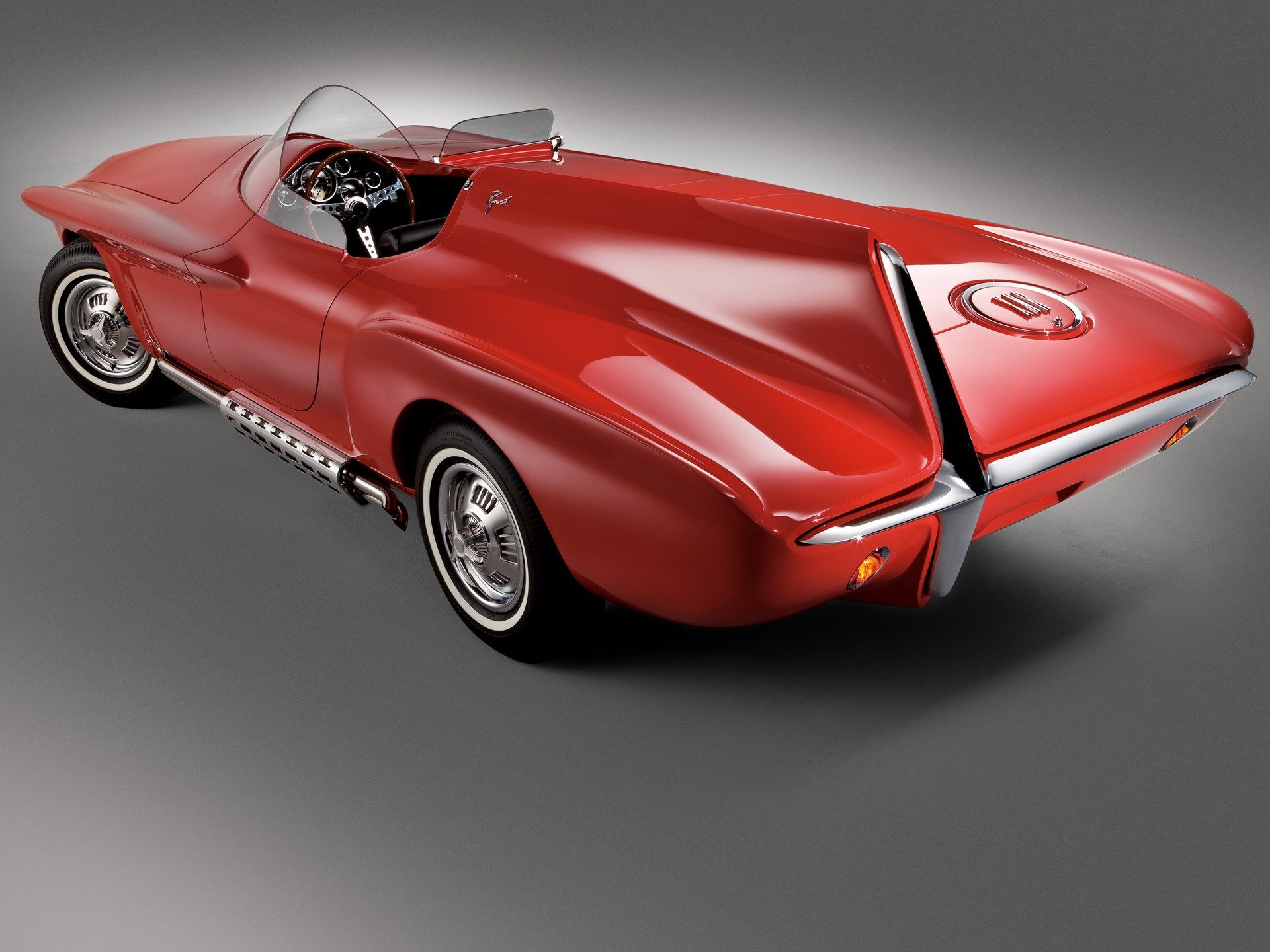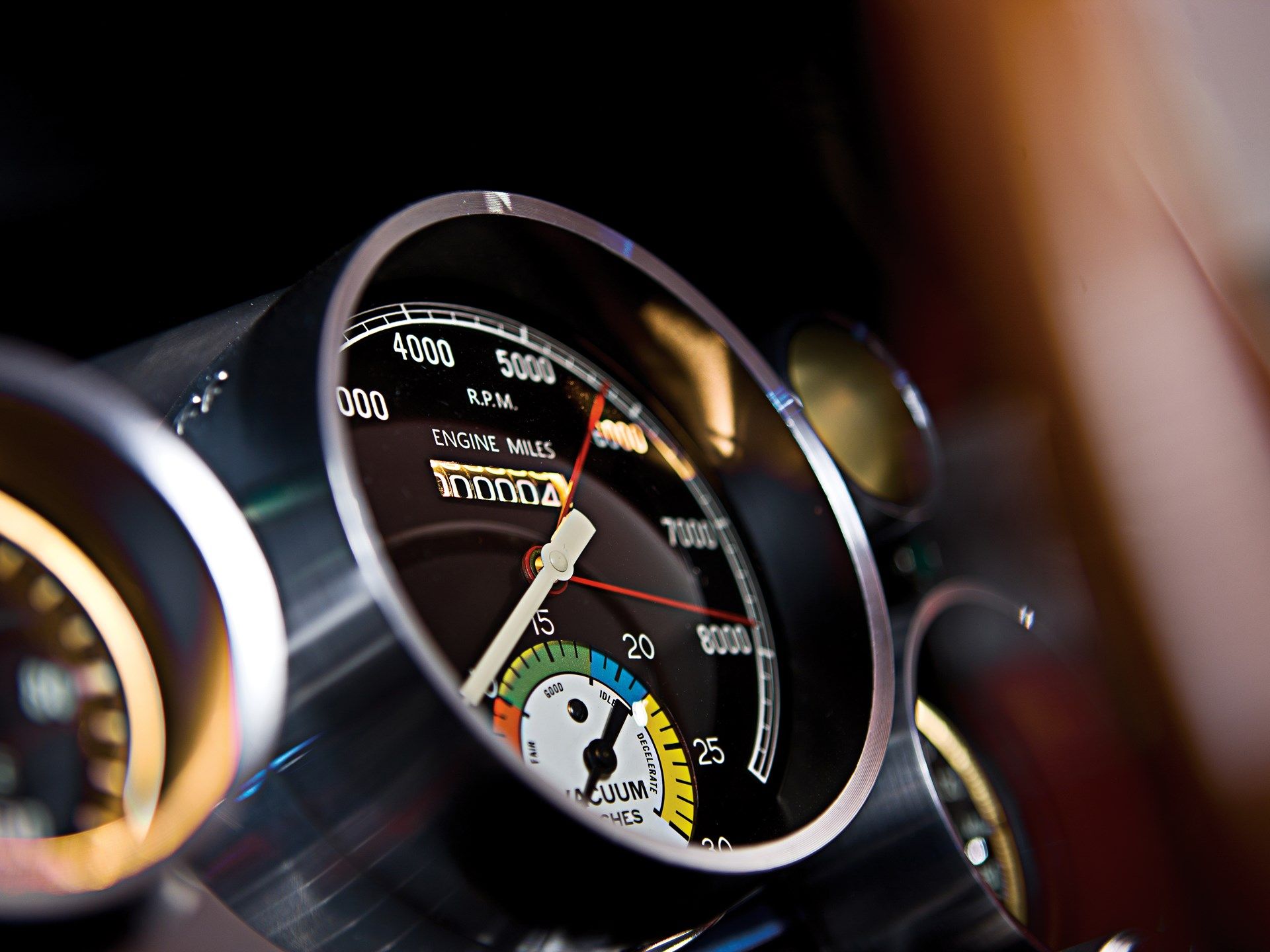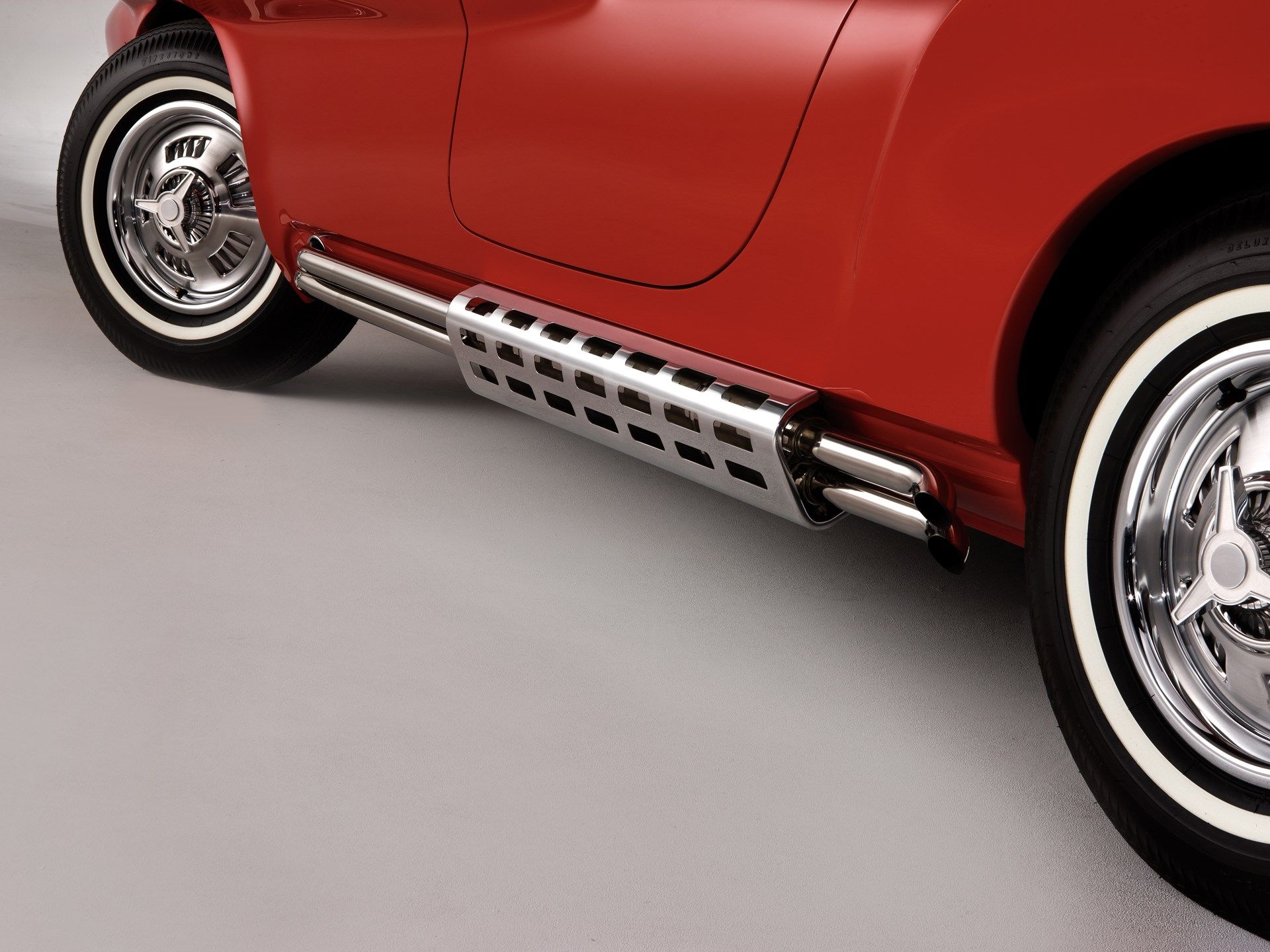The Plymouth Asymmetrica, later renamed the XNR after its designer, was a concept car built and showcased in the 1960s. Plymouth's first full-blown sports car, the XNR was conceived as a possible competitor for the Chevrolet Corvette and the Ford Falcon, but the show car never made it into production.
Unlike most concept cars from the era, which were kept by their respective automakers, the XNR was returned to its builder, Italian firm Ghia, and then sold to a privateer. The XNR changed hands a few times until the 1970s when it made to Lebanon, where it was found and hidden during the country's civil war. The concept was sent to Canada in 2008, where it was restored until 2011. In 2012, it was auctioned for nearly $1 million.
It's been almost 20 years since the Plymouth brand was discontinued and the XNR doesn't get the attention it deserves. It's why we decided to have a closer look at one of the company's most underrated concept cars.
Continue reading to learn more about the Plymouth XNR.
1960 Plymouth XNR Concept
- Make: Array
- Model: 1960 Plymouth XNR Concept
- Engine/Motor: inline-6
- Horsepower: 250
- [do not use] Vehicle Model: Array
The Background
While many luxury automakers went bankrupt during the Great Depression of the 1930s, Plymouth remained popular and was an important factor in Chrysler survival before and after World War II.
The company continued to grow in the early 1950s, but sales started to decline when General Motors began using styling cues from its Motorama concept cars on production models. While the Chevys and the Fords became more stylish, the Plymouths remained tall and square-ish, a design language imposed by the company's conservative president, K.T. Keller.
But as sales started to slow down, Keller hired Virgil Exner and have him a free hand. Exner's conceptual designs spawned more futuristic looking production models that were advertised with the tagline "suddenly it's 1960!" The new cars placed Plymouth on equal ground with Ford and Chevy and the Chrysler-owned brand wanted to take things up a notch.
Plymouth XNR Exterior
Plymouth automobiles were already pretty dramatic by the late 1950s, but the Exner took things up a notch with the XNR.
The sporty front fascia consisted of a massive grille with chrome frame that housed a pair of round headlamps on each side. The quad-headlamps layout was very popular at the time. The lower section lacked a proper bumper, which made it look like an early version of the iconic Roadrunner.
Another notable feature is the large, offset hood scoop. The scoop grows larger as it progresses toward the curved windscreen on the driver's side, a feature seen on some race cars from the 1950s. On the passenger side, the hood is completely flat, as is the foldable windscreen. Exner also designed a steel toneau cover for the passenger side cabin, yet another feature inspired by European race cars like the Jaguar D-Type.
Onto the sides, the XNR has jet-inspired wings that extend from above the front wheel arches toward the doors.
Speaking of fins, the offset design continues on the deck lid with a big tail fin. A vertical chrome strip emerges from the fin and flows toward the apron. A second chrome strip stretches the entire width of the fascia forming a big cross with the fin. An offset hood, a big fuel cap with "XNR" lettering, and a pair of small, round taillights round off the design.
Plymouth XNR Interior
The XNR's interior is pretty basic and in line with production cars of the era. However, Exner added a few unique features. The dashboard, for instance, looked a bit revolutionary back in the day, with all the gauges featuring thick, polished aluminum rims. The rev counter, which goes up to 8,000 rpm, includes a vacuum gauge.
The passenger side of the dashboard is much narrower, mainly because it doesn't extends far below the body panel. The glove compartment is unique too. Instead of compartment integrated into the dash, Exner designed it as a camera case. The leather case is also removable, so it can be used to carry an actual camera. Yes, you guessed it, this feature is also the result of Exner's passion for photography.
Plymouth described the seats as buckets. Obviously, they have nothing in common with today's sports seats, but they offered a bit more support than those found in most production cars. The passenger seat is place four inches lower on the floor.
A wood-rimmed steering wheel with lightweight spokes and a set of sports pedals round off the interior. Exner also added stowage area for luggage behind the seats.
Plymouth XNR Drivetrain
Although many American sports cars were using big V-8 engines by 1960, Plymouth went with a 2.8-liter inline-six mill for the XNR. Known as the G-engine, this unit was introduced in 1959 as the Slant-Six. The nickname came from its cylinder bank being inclined at a 30-degree angle from vertical.
The G-engine delivered better performance than its competitors in 1960 and it's probably why Plymouth decided to use it in the XNR. The six-cylinder was also lighter than the company's available V-8 mills and the XNR needed as many lightweight components as possible.
But the small-displacement engine was by no means dull. Fitted with a Hyperpak-tuned ram intake, four-barrel carburetion, ported cylinder heads, and custom cams and pistons, it was actually very similar to the design Chrysler used in the newly formed NASCAR compact class racing program. Cars powered by the Slant-Six went on to dominate the class to the point where it was cancelled due to lack of competition.
The chassis setup was in line with early 1960s trends. It had an independent front suspension with torsion bars and tubular hydraulic shock absorbers and a live rear axle with semi-elliptic springs. Stopping power came from drum brakes at all four corners.
Plymouth XNR Prices
Concept cars usually had one of two fates back in the day: automakers either kept them in storage or destroyed them.
Ghia eventually sold the concept to an unidentified Swiss man for an undisclosed sum. The XNR was later sold to Mohammad Reza Pahlevi, the Shah of Iran, who was also a car collector. Pahlevi sold it to a Kuwaiti car collector named Anwar al Mulla, before the XNR made its way to Lebanon. The car was hidden in a garage when the Lebanese Civil War broke out in 1975. In the 1980s, local car collector Karim Edde discovered the XNR, bought it, and hid it in an underground warehouse. Edde moved the car several times to save it from being destroyed.
As the war ended in 1991, he began searching for someone to restore the XNR. The process began in 2008, when the roadster was shipped to RM Restoration in Canada. Finished in 2011, it was displayed at Pebble Beach, winning the Gran Turismo and the Class awards. It also won the latter at Amelia Island and it was nominated for the 2011 International Historic Motoring Awards for "Restoration of the Year."
Plymouth XNR Competition
Chevrolet Corvette C1
Although it never made it into production, the XNR was supposed to be Plymouth's response to the Chevrolet Corvette. Introduced in 1953, the Corvette had already become an iconic sports car by 1960s. The original design of 1953 was upgraded a few times until the 1960s, with highlights including a quad-headlamps layout, more chrome, and new features inside the cabin. Originally launched with a six-cylinder engine, the Corvette became a V-8 sports car in 1955 with the addition of the 4.3-liter small-block. In 1960, it was already using a 4.6-liter V-8 with up to 315 horsepower. The first-gen Corvette was produced until 1962, when a 5.4-liter V-8 generated as much as 360 horsepower. Pricing in 1960s started from $3,872. Nowadays, you can purchase a C1 for less than the XNR's massive price tag, but it really depends on the model. The low-mileage, near-mint examples with rare options can fetch in excess of $1 million.
Read our full review on the 1953-1962 Chevrolet Corvette C1
Conclusion
The XNR created quite a stir when it was unveiled in the 1960s, but it was soon forgotten after Plymouth said no to a production version. The fact that it was sold in the Middle East also contributed to this. However, thanks to having been owned by the Shah of Iran and to surviving the Lebanese civil war, the XNR now has a rich history to talk about. The fact that it was restored to the last bolt and won a few awards makes it that much more appealing. It's a full-fledged collectible, a car that sparked the imagination of many Plymouth enthusiasts back in the day. And needless to say, it's still spectacular to look at.

